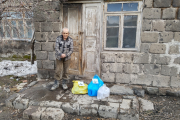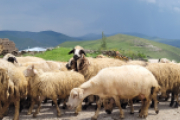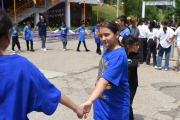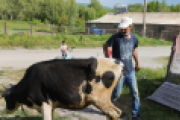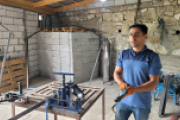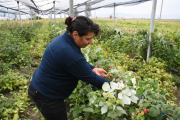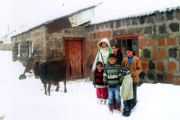According to the 2021/2022 Human Development Report, around three million people live in the Caucasian country, 90 % of whom belong to the Armenian Apostolic Church. The population of the presidential republic, which has been independent since 1991, is still suffering from the consequences of the 1988 earthquake and the unresolved conflict with Azerbaijan over the Nagorno-Karabakh region. Poverty and a high unemployment rate of 15 % according to the International Monetary Fund are the result. Industry is poorly developed in Armenia. Livestock and agriculture are widespread. Depending on the region, the country has both a dry climate with temperatures of up to +45 °C and lows of up to -40 °C.
Projects in this country
Sheep as a way out of poverty
In the Shirak region of northern Armenia, which is characterized by poverty and unemployment, 16 vulnerable families receive sheep. The sale of dairy products and wool, as well as covering the households' own needs, improves their livelihoods. The first three newborn lambs are given to other...Psychologically supervised summer camps for displaced children in Armenia
When fleeing from Nagorno-Karabakh, displaced children have often left a part of their childhood behind. The summer camp offers these children important psychosocial support in a playful way to help them come to terms with their sometimes traumatizing experiences. Through art therapy, theater games...Cows bring hope to Armenia
Many vulnerable people live in the structurally weak north of Armenia (Shirak region), often struggling to survive. 10 of these households are being supported with the purchase of a pregnant cow. Along with training and veterinary care, this enables the families to increase their standard of living...Cow distribution North Armenia
To support families in the structurally weak north of Armenia, 13 households in the Shirak region are each receiving a pregnant cow. Along with training and veterinary care, this enables the families to produce dairy products and meat for their own consumption and later for sale. The first calf born...Work and new prospects for young adults
The north of Armenia is characterized by poverty due to a lack of income opportunities, among other things. Women and young adults in particular find it difficult to find a job in the remote provinces of Tavush and Gegharkunik. A lack of training opportunities and information on market trends leads...Food security for smallholder farmers
Shirak province in northern Armenia is characterised by poverty and poor agriculture. As part of the project, smallholders receive seeds and are trained in improved cultivation, irrigation and crop storage methods.Sheep distribution for livelihood security
The villages of Jajajur and Hovit are located in the Shirak province in northern Armenia, which is one of the provinces most affected by unemployment and poverty. The project provides impoverished families with sheep. By selling dairy products and wool and covering their own needs, the households'...Alternative farming methods for smallholder farmers
Shirak province in northern Armenia is characterised by poverty, inefficient agriculture, rural exodus and migration. The project helps by issuing more efficient seeds and by improving cultivation, irrigation and crop storage methods.A cow for a poor family
To support families in the structurally weak city of Jajur, 15 households each receive a pregnant cow along with training and veterinary care. This enables the families to produce dairy products and meat for their own consumption and later for sale. The calves born are given to other families.Country reports
There is currently no content.


 Donate now
Donate now
